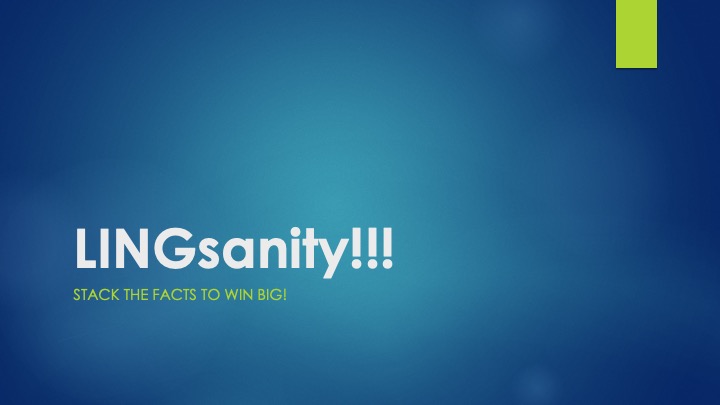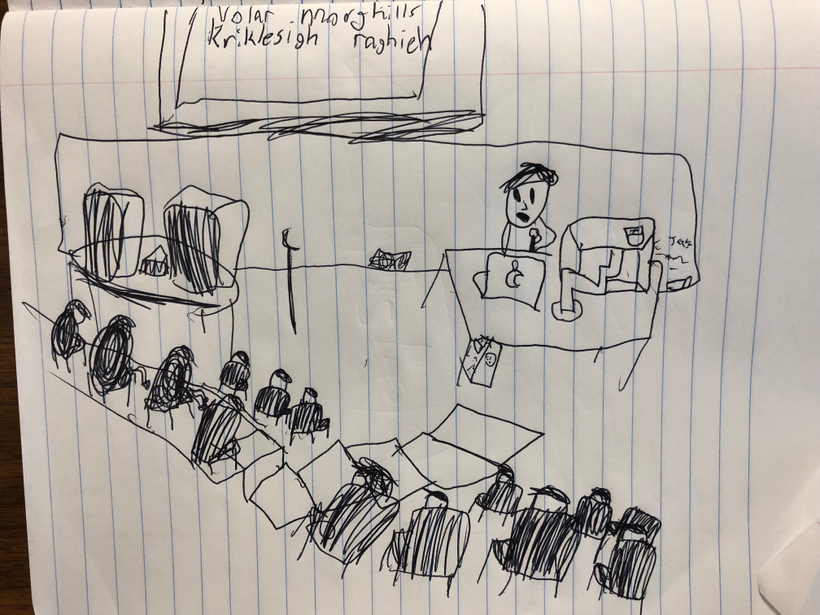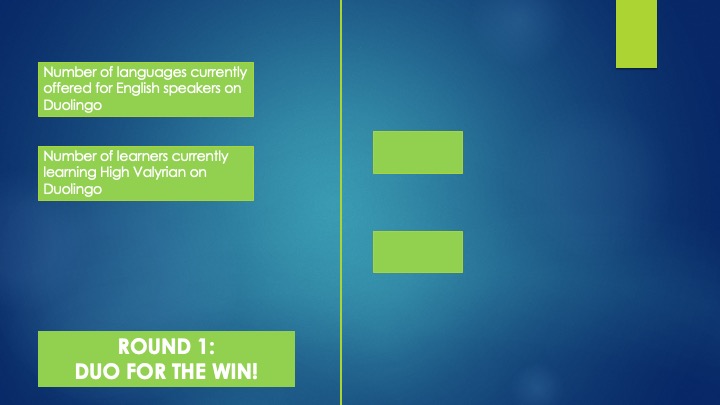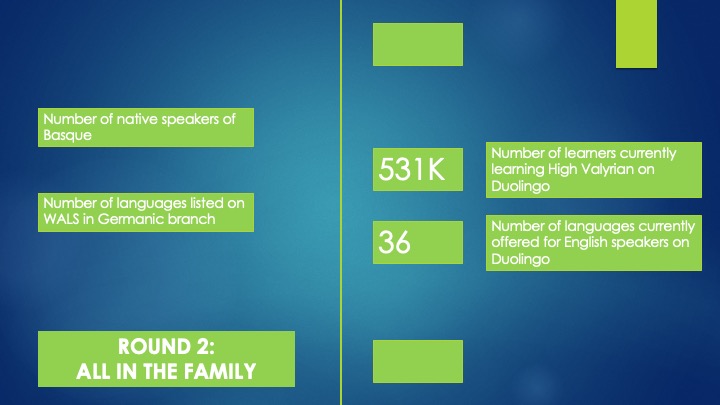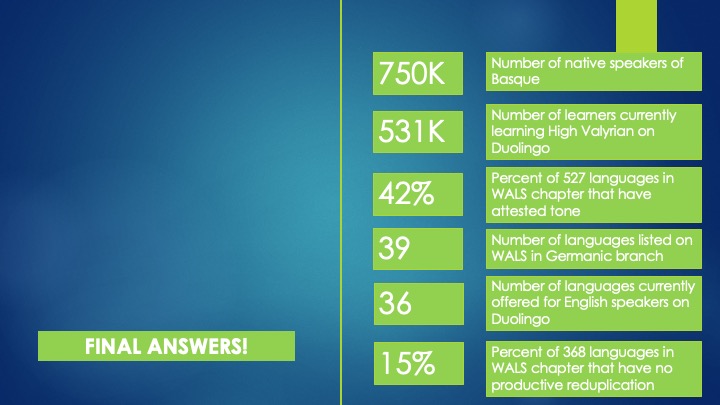Podcast: Play in new window | Download (89.0MB)
Subscribe: | More
Neither David nor I can believe we have already reached episode 10 of our podcast! That fact will become pretty evident in the opening 15 seconds when we try to remember how long we’ve been recording these episodes. This episode is titled “Jessie’s Conlangs.”
In this episode, I introduce five of my conlangs, which are all at different stages in how developed they are, but they all have enough structure that I can translate sentences into the conlang. I briefly introduce each conlang, providing a bit about the speakers and the language’s typological information, and then I send David a sentence or two in IPA, putting him on the spot to serve as the reader.
Here are the IPA transcriptions David reads in the episode; acute accents mark primary stress, and any grave accents mark secondary stress. Otherwise, these sentences are written in standard IPA. Where I had the interlinear glosses handy, I have provided those, too.
Conlang #1: Hiutsath
luxɑkɑθíto tɑɸíhɑ θesúsu luletotóɑʃ letɑɸíhɑhomɑ ɸɑleámo.
‘may your tree grow and have four branches’
Conlang #2: Xyrab
ɣe by ger
(question marker) you understand
‘Do you understand?’ / ‘Understand?’ / ‘See?’
ɣe wə βwɑ Jessie gwe eβ
(question marker) I find Jessie where please
‘Where can I find Jessie?’
Conlang #3: Gnomá
jadúgra bijanns twai gumannim gibmut dzabíjann wasjaka ja waiθaika jadwa bainn.
wizard seed-PL-ACC two man-PL-DAT give-GEN.PAST PROX-seed-PL grow-FUT and become-FUT magical tree-PL
‘A wizard gave two men seeds that would grow into magical trees.’
Conlang #4: gineso
tʃe jibók’ado ata anlúfeje ómwati hédi tajománad.
3sg,hum,nom c4,pl-berry-acc dem c3,sg-tree-loc tall-att near 3sg-3pl-past-find
‘She/He found berries near that tall tree’
Conlang #5: woxtjanato
wúakladɛn àllelát ʀet. fáidɛn itové jiféɛn swa adzé tomúgwe iùɲolenáox íkside dézu adzé totjávi.
‘A tree grows in a field. She believes that she herself possesses strength because of this: her branches are near to the sky goddesses.’
Along with these conlangs, I have created some conlang sketches, but they are so woefully incomplete that they are really more of playthings than something sharable. And I have created one other fully developed conlang, but that work was done for a project that is not my own. While I can’t really share the details of the language or project right now, someday I hope to be able to share that one with you, too.
Thank you to everyone who has shown interest in my conlangs in the livestream comments, and I hope you enjoy this episode!
